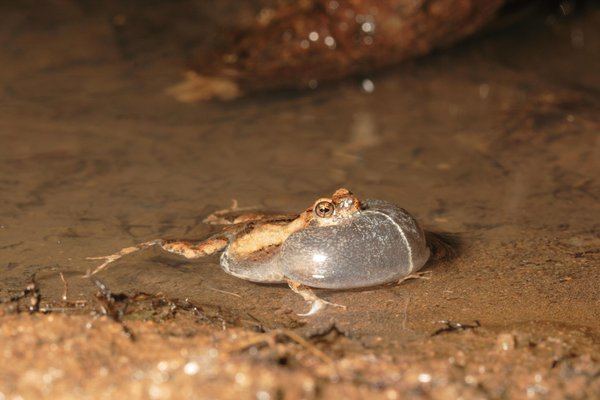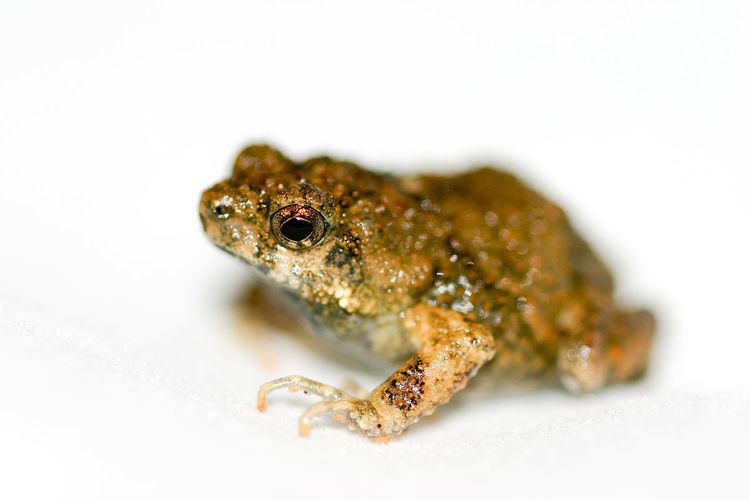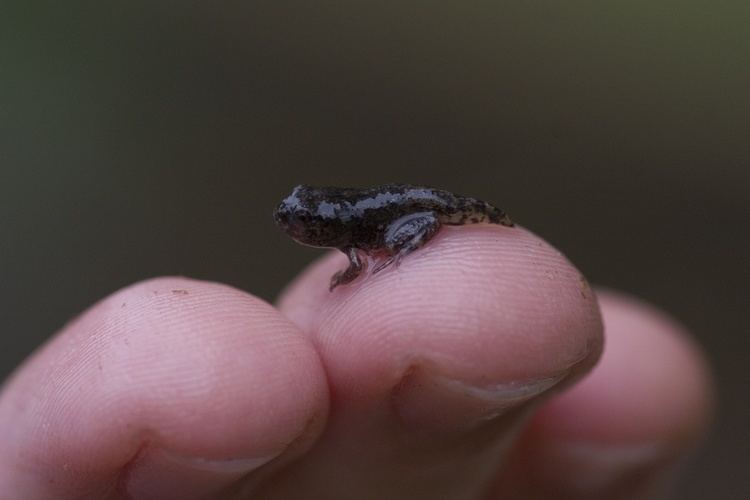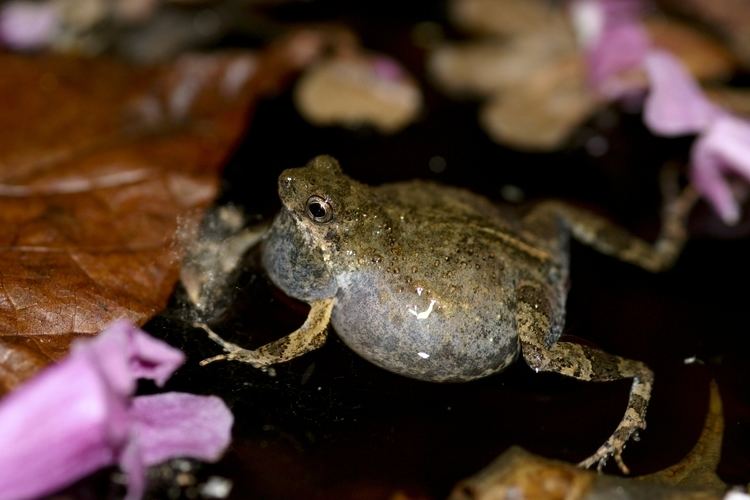Order Anura Higher classification Physalaemus | Phylum Chordata Scientific name Engystomops pustulosus Rank Species | |
 | ||
Similar Frog, Physalaemus, Engystomops, Amphibians, Fringe‑lipped bat | ||
Male t ngara frog serenades females science news
The túngara frog (Engystomops pustulosus; formerly known as Physalaemus pustulosus) is a species of frog in the Leptodactylidae family. Its local Spanish name is sapito de pustulas ("pustulated toadlet"). It is found in Belize, Colombia, Costa Rica, El Salvador, Guatemala, Honduras, Mexico, Nicaragua, Panama, Trinidad and Tobago, Venezuela, and possibly Guyana. Its natural habitats are subtropical or tropical dry forests, dry savanna, moist savanna, subtropical or tropical dry lowland grassland, subtropical or tropical seasonally wet or flooded lowland grassland, freshwater marshes, intermittent freshwater marshes, pastureland, heavily degraded former forest, ponds, and canals and ditches.
Contents
- Male t ngara frog serenades females science news
- Engystomops pustulosus chorus t ngara frog
- Description
- Ecology
- Breeding
- References

Engystomops pustulosus chorus t ngara frog
Description

Engystomops pustulosus is a small species of terrestrial frog growing to a length of between 25 and 35 mm (1.0 and 1.4 in).
Ecology
Engystomops pustulosus is nocturnal, emerging at night to feed on ants and termites and other small invertebrates among the plant litter on the ground. During the breeding season, the males group together at night at temporary pools and call to attract mates.. When a female chooses one of the males, amplexus occurs at the edge of the water and the male creates a foam nest in which the eggs are laid; the tadpoles develop in the water and undergo metamorphosis into juvenile frogs in about four weeks.
Breeding

Female frogs will choose a mate based on the attractiveness of a male’s call. The females are able to recognize the species of the calling male and will preferentially choose to mate with males of the same species. Female preference within her own species is based on complexity of call. Males produce a call that consists of a whine, and can also add up to seven short chuck sounds to their mating call. A call consisting of both a whine and a chuck is considered a complex call. The chuck portion of the call is produced by vibrations of a fibrous mass suspended near the frog's larynx. Larger fibrous masses allow a frog to produce more chucks for each whine.

Females usually prefer complex mating calls (whine and chucks) to simple mating calls. One study found that females will choose a simple call from a member of her own species rather than a complex call from a foreign or different species. Females prefer the mating call of frogs who produce chucks with lower frequencies. One explanation for this preference is that lower frequency calls are found in males of larger size. A larger body size usually correlates with a higher rate of fertilization. If a female finds a male attractive, she will use his mating call, as well as ripples in the water caused by the production of his call, to locate her new mate.

Natural selection plays a role in the varying complexity of a male's advertisement call. Parasites as well as predators, such as the fringe-lipped bat (Trachops cirrhosus), are able to recognize species of frogs based on their mating calls. These predators, like females, prefer complex calls and will use these calls to locate and prey upon male túngara frogs. It is for this reason that males have been found to alternate between complex and simple calls depending on the situation at hand. Males produce complex calls more often when there are other calling males nearby, forming what is known as a chorus. Males that use calling strategies such as this according to cost and benefits of call complexity are able to maximize the possibility of finding a mate and minimize the risk of predation.
When mating, the male frog centers himself atop the female to do rhythmic mixing of a foam-producing solvent released by the female to generate a floating foam nest. The foam nests are resistant bio-foams that protect the fertilized eggs from dehydration, sunlight, temperature, and potential pathogens until the tadpoles hatch. The nest degrades when the tadpoles leave after about four days, otherwise the nest can last for up to two weeks.
The foam is made up of a mixture of novel proteins (called ranaspumins) with unusual surfactant and carbohydrate binding properties that are thought to contribute to the formation and stabilization of the nest structure, resisting dehydration, predation and microbial degradation, whilst being compatible with developing eggs and embryos.
One of the proteins present in the foam (ranaspumin-2) has been used by Carlos Montemagno, David Wendell, and Jacob Todd to create an artificial photosynthetic foam. Unlike chemical detergents the protein does not disrupt cell membranes allowing photosynthetic proteins to be positioned in the foam. This new method for producing biofuel won a 2011 Earth Award.
